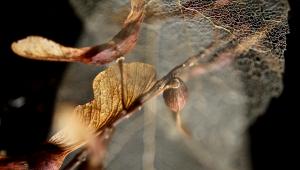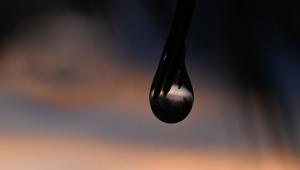Do It Yourself
Build A Low Cost Film Drying Cabinet
Our project this month is to turn a hanging garment bag into an effective film drying cabinet. Although this is just barely a Level 2 Project (see the April 2000 issue for an explanation of my DIY complexity scale), it requires the wiring of an AC lamp socket. (Editor's Note: As a safety precaution, all wiring should be checked by a qualifed electrician.) The total cost is around $30, assuming you have none of the parts lying around, and the cabinet can be built in an afternoon. Parts List
As many garment bags are made of a cloth-like material that can leave dust spots on dried film, look for one that is made mostly of vinyl. Be sure it is the large box-shaped style designed to be hung in a closet, not the folding carryon luggage type. If you have sufficient darkroom space, consider using the floor-standing variety with rigid internal frame. The foamcore board must be large enough so that a single sheet can be cut to fit tightly in the bottom of the bag for reinforcement. An 8' household extension cord with its receptacle end snipped yields an AC cord with a safe, molded-on plug. The socket mounting nipple must be 1" long. Drying heat is provided by a light bulb, but it is imperative that a rough-service bulb be used to keep water droplets from shattering the hot glass. Bulbs such as the GE Saf-T-Gard have a protective Teflon coating and/or a thicker glass envelope to withstand the rigors of outdoor and shop use. To prevent overheating, use no larger than a 100w bulb in a hanging garment bag or 150w in a floor-standing model. Rough-service bulbs will be clearly marked--do not substitute a regular bulb! The accompanying diagram and photo will guide you through the construction of this simple project. Using a sharp art knife, first cut the foamcore to fit the inside bottom of the garment bag. Next, remove it and cut the air intake holes. Finally, put the finished panel back in the bag and use it as a template for carefully cutting the intake holes through the bag's bottom. Spray the foamcore and the lamp socket board with Krylon or a similar coating to protect the former from water droplets and to seal wood dust particles into the latter. Tape the ends of the lamp socket board to the furnace filter to prevent it from tipping during use. As most hanging garment bags are not tall enough to accept a 36-exposure roll of 35mm film in one strip, it will be necessary to cut it in two for drying. An easy way to create a space in which to make this cut, and not damage adjoining frames with film clips, is to simply take an exposure of the sky or some other easily identifiable object after the 18th or 19th frame. With the washed film still on the developing reel, clip the loose end to the wire frame at the top of the bag, then slowly unwind until this "blank" appears. With 220 roll film, sacrifice one frame after the 10th exposure. Some darkroom workers use a
squeegee to remove excess water from their film, but I've always cringed
at the mere thought--all it takes is a tiny piece of grit caught in the
rubber blades to produce a continuous gouge in your negatives. Instead,
I recommend treating fully washed film in Kodak Photo-Flo Solution (or
a similar wetting agent) to eliminate water spots and reduce drying time.
For safety, make sure the hanging film is at least 6" away from the bulb
and that the bag sides are never more than slightly warm to the touch.
If they become hot, use a lower wattage bulb. An inexpensive plug-in appliance
timer adds convenience, but always turn the lamp socket switch off when
finished for the day. |


































